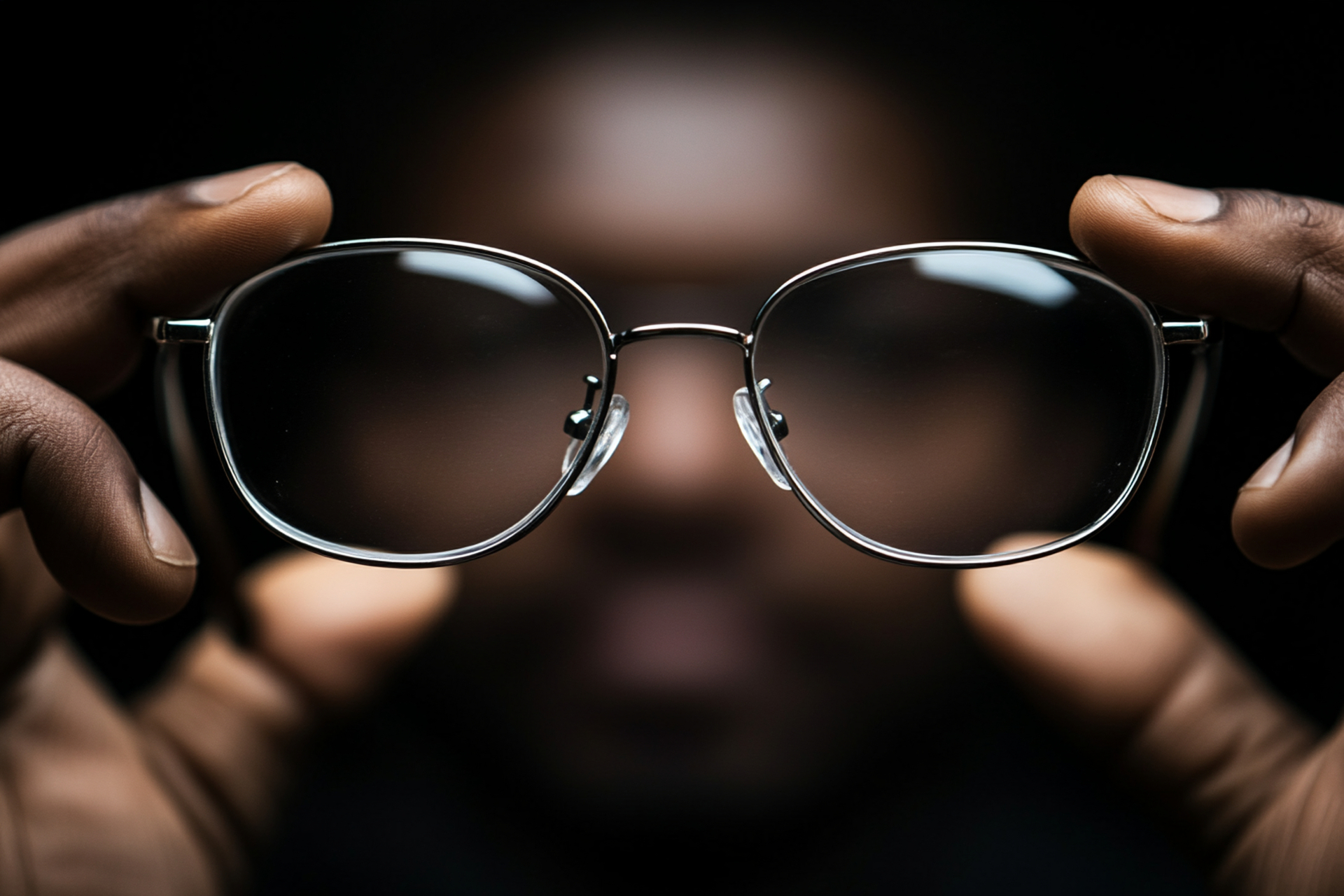How Do Varifocals Work?
Varifocal lenses, also called progressive, multifocal or progressive addition lenses are specially designed to let you see clearly at distance, intermediate, and near with a single pair of glasses. Instead of distinct segments like bifocals, they offer a smooth gradient of lens power from top to bottom
-
The upper portion of the lens is for distance vision.
-
The middle “corridor” is for intermediate tasks, such as computer use.
-
The lower portion is for near tasks, like reading or smartphones.
Because the power shifts continuously, your eyes can glide between zones naturally. The trade off is a little peripheral distortion at the edges especially with lower grade designs but higher quality free form or digital varifocals minimise this effect.

1. Common Problems with Varifocal Glasses
- Adaptation and the “Swim” Effect: When people first start wearing varifocals, it’s common to feel dizzy, get headaches, or sense the world “swimming” slightly. That’s because your eyes and brain must learn to navigate through different visual zones. Most people adapt within a few days to a couple of weeks, provided they wear the glasses consistently
- Blurred or Distorted Peripheral Vision: Soft focus or blur at the edges of the visual field is expected due to the lens design. The solution is to move your head, not just your eyes, to look through the correct zone or upgrade to premium lens designs which push distortion further from the central visual corridor.
- Narrow Intermediate Zone (e.g. for Computer Work): Some varifocals have a small intermediate zone, making it hard to focus on computer or dashboard distances. If that’s an issue, you might consider occupational or computer specific varifocals, which offer a wider intermediate field.
- Poor Fit or Misalignment: If the lens zones are not perfectly aligned with your pupils (due to poor measurement or incorrect frame choice), you may see vision errors, headaches or discomfort. A professional fitting is critical
- Depth Perception Challenges: Some wearers initially struggle with depth cues particularly walking stairs or driving. Practising these activities in controlled environments helps, and again, ensuring a precise prescription and fit usually resolves the issue
2. Varifocals vs Bifocals
Varifocals, also known as progressive lenses, have a seamless gradient with no visible lines. They provide clear vision at distance, intermediate and near ranges. They are modern and sleek in appearance and remove the need to swap glasses for different tasks. They do require an adjustment period that can last from a few days to a few weeks.
Bifocals, on the other hand, have two distinct zones that are separated by a visible line. They provide vision for distance and near ranges only, without any intermediate coverage. They are simpler and usually easier to adapt to, but they require switching glasses for different tasks and tend to look dated because of the visible segment.
In summary, varifocals offer continuous vision at all distances and are more cosmetically appealing. Bifocals are easier to get used to but lack intermediate vision and have a more traditional appearance.
3. Varifocal Contact Lenses
Although still evolving, varifocal or multifocal contact lenses offer an alternative to glasses. They use ring based or blended prescriptions to provide near and distance vision. Modern designs minimise ghosting and stray images, though adaptation can be more challenging than with glasses.
They are especially helpful for people who dislike spectacles or need vision correction for sports or active lifestyles. However, not all prescriptions are suitable (some require high astigmatism correction), so compatibility depends on your specific optical needs.
4. Who Should Consider Varifocals?
Varifocals typically suit:
-
Anyone over 40 experiencing presbyopia (diminished near vision).
-
Those needing correction for both distance and reading without juggling multiple glasses.
-
Individuals wanting a natural, line free look.
Not ideal for:
-
People with very high astigmatism or extreme prescriptions for whom fitting can be tricky.
-
Those with limited neck mobility who struggle to tilt their head or find the right zones.
-
Anyone unwilling to give themselves time to adapt or follow a professional fitting routine
5. Embracing Varifocal Contact Lenses
Varifocal contact lenses are a modern solution for active lifestyles or spectacle free wear. They work through multifocal ringed zones or blended power profiles. While not as common as glasses, they can be highly effective especially for mild to moderate prescriptions. Discuss with your optometrist whether you’re a candidate, particularly if you have specific vision needs like astigmatism or dry eyes.
Get in Touch with Techfident
At Techfident, we help businesses minimise IT downtime through proactive IT support, 24/7 system monitoring, and expert IT management. Our services include:
- Remote and onsite IT support
- Network and infrastructure management
- Cybersecurity solutions
- Microsoft 365 and cloud support
We offer flexible support plans with no long-term contracts, ensuring businesses get the help they need when they need it.
To learn more about how we can help your business stay online and productive, get in touch today via our online contact form or call 0203 4883282.




